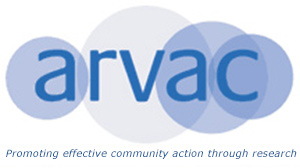By Zanib Rasool & Katy Goldstraw
As the work of the taking yourselves seriously project develops we continue to use arts methodologies for social cohesion. Five themes have emerged from our work within the three projects; knowledge, co-production, roles, voice and ethics. Our work with the women’s project in Rotherham has developed and as the artist reflects, she is immersing herself in the space and time that she is capturing on canvas. As she immerses herself in this space and time, in the sight, sound and smell of Pakistan, we have realised that need things. Lorraine Daston (2007:9) reflected
‘Imagine a world without things. It would be not so much an empty world as a blurry one. Nor would there be anything to describe, or to explain remark on, interpret, or complain about -just a kind of porridgy oneness. Without things we would stop talking.’
At that start of this project we perhaps did not did not envisage objects and things having such important significance. However, artefacts and objects are therefore important tools for research as Rowsell, (2011:332), argues ‘putting artefacts in the centre of the methodology, as an optic [is] to get an insider emic gaze of individuals, their communities, and lived histories’. She further emphasises on the power that artefacts hold in allowing researchers to access information that might not be possible through other methods, such as observations, document analysis and even interviews. As we felt for our mother’s journey we needed images of objects to help us to narrate their stories of migration.
“I remember playing under mango tree with clay pots and marbles
I use to help my mum and aunties in the corn field
I remember my grandma milking cows and making lassie in a gadget called Madani
Grandmother grinding flour in chakki
We had tandoor in our yard; women neighbours use to come to make roti
During kite flying season we children get together and make kites at school and then take them home and fly them from the top of our house roofs, it was our social activity
I remember the house roof leaking at night and putting buckets under the leaks.
Decorating hand held fans with moti”’ Interviewee One
We wonder how the artist will capture those emotions of home on the canvases that she is creating? Using objects and artefects to recall the emotional aspects of memory helps us recall and re-imagine our memories, to reconnect with the multicolour tapestries of our multiple identities. The arts offer a way of seeing what might not always be visible, which we consider within the projects. Investigated within the projects is the idea that the quality of arts based research lies in the process of its creation. Arts based approaches can be understood as a process, or a product. Arts based approaches can be a social journey through which a new understanding emerges, or a the production of a work of art, or indeed as anywhere along the process to product binary.
Using arts methodologies for social cohesion is complex, integrated and emotional. Issues of power and trust are located in conversations around inequality, identity and diversity. Using arts methodologies for social cohesion is to ask questions and create connections from an alternative angle. Indeed, arts methodologies enliven our minds, bodies and emotions, recognising the multiplicity of our knowledge and identities. In conclusion, arts methodologies have the potential to empower the process of social cohesion through an alternative lens (Eisner, 1997). They offer an opportunity to build dialogue and reflect alternative knowledges.
